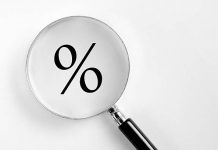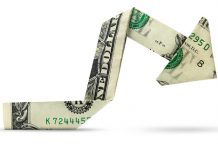I only have some egg dripping from my face this morning, instead of a full dozen including shells. My view that the price action post the US inflation numbers across asset classes suggested an albeit temporary, risk sentiment rally was on the way, was in serious doubt yesterday. Markets in Europe and early New York went “hold my beer” and went into “the Fed is going to hike by one percent, we’re all doomed” mode. The negativity was compounded by soft quarterly earnings from JP Morgan and Morgan Stanley. Equities, oil, commodities, and precious metals were pummelled, while the US Dollar soared on currency markets with the Euro falling close to 0.9950 before regaining 1.0000 later in the day.
Admittedly Europe had reason to be nervous. Statements out of Russia about whether Nord Stream 1 would restart after maintenance finishes on 21st July didn’t fill the market with confidence. Ructions in Italian politics (there’s something completely different…), added to the woes with Prime Minister Draghi offering to resign. Something the Italian President thankfully declined. Although the Euro managed to unwind most of its losses, European equities were thrown on the ground, kicked a lot, and stayed there. Its hard to see them recovering until the 21st of July “gas-mageddon” day passes. You can throw Europe’s illegitimate love child, the United Kingdom, into that fray as well.
Thankfully, it was two Federal Reserve officials who rode to the rescue. Fed Governor Waller and St Louis Fed President Bullard both indicated they were erring towards a 0.75% hike at the July FOMC meeting, and not the dreaded 1.0%. Lost in the small print for both was that both qualified that on “incoming data.” Oil finished where it started, the US Dollar gave back a goodly portion of its gains, and Wall Street finished a bit lower, while the Nasdaq actually closed flat. US bonds saw yields rise in the longer-dated tenors, while the 2-year remained unchanged, narrowing the curve inversion, and boosting risk sentiment at the periphery.
In Asia, all eyes are on China today. The mortgage payment strike by Chinese consumers seems to be gathering more headlines, highlighting a millstone around China’s neck that had been forgotten recently, the slow-moving trainwreck of the private developer sector, where debt issues appear to be spreading to the domestic market from being an offshore problem. Alibaba Cloud executives have also been invited for tea and biscuits with the police apparently, who are keen to know how a 1 billion name database of theirs stored on Ali Cloud was stolen by hackers. China equity markets won’t like that as the words “common prosperity” ring like a bad Christmas song that returns from the dead each year in December, or mid-October if you live in Singapore.
Mostly, attention will be on the tier-1 data dump that has just been released. The House Price Index for June YoY has slumped to -0.50%, and GDP for Q2 YoY rose by only 0.40%. That is likely tied to Industrial production, which missed estimates, rising by 3.90% YoY for June. Offsetting that was a very strong performance by Retail Sales, which leapt higher by 3.10% YoY for June, well above estimates. Assuming that Q3 is not marked by more lockdowns in key urban centres like Shanghai, the data is expected to rebound. With the Chinese consumer seemingly in better shape than thought, markets will concentrate on the Retail Sales number and the data dump is probably a modest positive on balance.
Attention will now swivel to tonight’s US Retail Sales numbers, which are expected to rise by 0.80% MoM for June. Given both Fed officials overnight qualified their rate hike remarks as depending on incoming data, we can expect some volatility over the release. Higher Retail Sales will put the 1.0% hike front and centre again, and I would expect we will see another rerun of the early Wall Street price action of yesterday, i.e., sell everything, buy dollars. Softer Retail Sales data could allow that risk sentiment rebound I talked about yesterday to gather some steam, as the markets seem to have priced in a 0.75% rate hike from the FOMC now.
Asian equities are in positive territory
Wall Street threatened to melt down overnight as markets hit the panic button over a potential 1.0% Fed rate hike at the end of this month, and soft earnings from JP Morgan and Morgan Stanley raised recession fears. Soothing comments on the former by two Fed officials allowed very skittish equity markets to rally later in the session, with Wall Street making back much of its losses.
The S&P 500 fell by 0.30%, while the Nasdaq managed to close in positive territory, rising 0.03%. Meanwhile, the Dow Jones closed 0.46% lower. In Asia, markets have reacted positively to the China data, allowing US futures to power higher. S&P 500 futures are 0.35% higher, Nasdaq futures have leapt 0.60% higher, while Dow futures have gained 0.20%.
With markets focusing on improved China retail sales data, Asian markets are moving higher as well today, helped along by the steady rally in US futures. Japan’s Nikkei 225 has risen by 0.45%, with South Korea’s Kospi adding 0.25%. In China, the Shanghai Composite is unchanged, but the narrower large-cap Shanghai 50 has jumped by 0.80%. The CSI 300 has added 0.15%. However, Hong Kong has fallen by 1.10% as China property worries, and the Alibaba summons weigh on sentiment.
In regional markets, Singapore has risen by 0.30%, while Taipei has rallied 0.70% higher. Jakarta is 0.20% higher, with Kuala Lumpur easing by 0.15%, and Bangkok remaining unchanged. With pressure still on the Peso, and markets reeling from the unscheduled rate hike yesterday, Manila has dropped by 1.10% today.
In Australia, the slump in China’s iron ore prices and copper overnight has continued today and seems to be weighing on resource stocks. Additionally, the very impressive employment data yesterday has raised concerns the RBA will have to tighten faster and harder. Those headwinds have seen Australia underperforming today. The All Ordinaries and ASX 200 dropped by 0.85%.
With European markets on edge over Russian natural gas supplies, recessions, and Italian political instability, it is hard to see the losses of yesterday being reversed ahead of the weekend. In the US, stock markets are likely to have a very binary outcome to US Retail Sales. Strong data will lift rate hike fears. Additionally, we have earnings from Citibank and Wells Fargo today, and if the JPM/MS earnings yesterday are a guide, there won’t be much good news today either.
Risk aversion lifts the US Dollar
Currency markets had a roller-coaster session with European and US investors piling into haven US Dollars from the get-go on recession fears. Weak bank earnings were another headwind and at one stage EUR/USD had fallen nearly 100 points to 0.9950. Only soothing comments from two Fed officials placing their markers in team 0.75% allowed some calm to return. The US Dollar gave back some of its gains but still finished broadly higher. Asian markets are notable for the complete lack of volatility today, and seem content to ride out the week ahead of US retail sales data this evening.
The dollar index finished 0.57% higher at 108.55, where it remains in Asia today. Resistance is at 109,30, the overnight highs, and 110.00. Support is at 107.50 and then the 1.0585 breakout point, followed by 1.0500. The relative strength index indicator (RSI) is overbought, signalling a potential correction lower by the US Dollar.
EUR/USD collapsed to ear 0.9950 overnight, with stop-losses kicking in after a clean break of 1.0000. However, rate hike comments from Fed officials allowed the single currency to claw back most of those losses, finishing 0.37% lower for the session at 1.0020, an impressive result. It has managed to edge higher to 1.0030 in Asia. The oversold RSI and underwhelming post-inflation performance by the US Dollar suggests Euro could be tracing out a low for now and a correction back towards 1.0200 is possible. EUR/USD has support at 0.9900/25. It has resistance at 1.1020, the overnight high, and then 1.0200.
GBP/USD followed the Euro overnight, finishing 0.55% lower at 1.1830, where it remains in Asia. It has support at 1.1760 and resistance it at 1.1965, followed by 1.2060 and 1.2200.
USD/JPY continued rallying overnight as US short-dated yields rose, finishing 1.40% higher at 138.95, where it remains in Asia. Having traded as high as 139.30 overnight the yen is the most obvious loser in the forex space of the combination of recession fears and interest rate differentials. USD/JPY’s next resistance is at 140.00, with support at 137.40 and 136.00. A soft US retail sales number could be the catalyst for a long overdue downside correction.
Asian currencies retreated overnight, led once again by the Korean Won and Thai Baht. Ominously, both the Singapore Dollar and Philippine Peso gave back almost all of their gains from yesterday after their central banks unexpectedly tightened monetary policy. USD/MYR has risen through 4.4500 today, and USD/CNY rose back above 6.7600 as well. It looks like central banks in India and Indonesia are capping gains on USD/INR and USD/IDR for now. The inability of Asian FX to rally on US Dollar weakness like the DM-space overnight suggests that more downside lies ahead, especially if strong retail sales in the US tonight put a 1.0% Fed hike back on the agenda. Next week, the onus will be on Bank Indonesia to raise policy rates or 15,000.00 may become its new starting handle.
Oil prices are steady
Both Brent crude and WTI were caught up in recession fears overnight, plummeting by four dollars a barrel at one stage in panicked New York trading. Once again, both contracts found their feet as the US Dollar retreated after the Fed officials’ comments, finishing the day nearly unchanged after a torrid session.
Brent crude finished almost unchanged at $99.55, adding 0.30% to $99.90 a barrel in Asian trading. WTI was almost unchanged at $96.45 overnight, slipping 0.30% to $96.20 a barrel in Asia today. How oil finishes the week will be reliant on how the US data comes out tonight, and after this week’s volatility, I won’t try to second-guess the gnomes of Wall Street.
Brent crude has resistance at $101.00, and then 104.00 a barrel, followed by a now distant $106.00 a barrel. It has support at 97.00, the 200-day moving average (DMA), and then $95.50 a barrel. WTI has support at $94.15, the 200 DMA, and then $90.60 a barrel. Resistance is at $98.00, followed by 101.00 a barrel.
Gold’s recovery was over before it started
Gold had another near $40 dollar range overnight, but this time, it could not recoup those losses, and its incipient recovery looks over before it started. Gold fell by 1.50% to $1710.00 overnight, where it remains treading water in Asian trading. Gold’s fate is entirely in the hands of US data tonight, and whether that can spark losses for the US Dollar, otherwise the technical picture has flipped in one day to looking very ominous once again.
Failure of $1675.00 will signal a much deeper move lower targeting the $1450.00 to $1500.00 an ounce regions in the weeks ahead. Gold has resistance at $1745.00, now a double top. That is followed by $1780.00, $1800.00, its June downward trendline.















